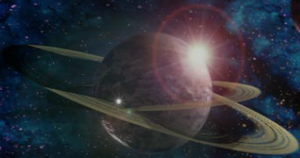Hocotate: Difference between revisions
No edit summary |
(Meh.) |
||
| Line 1: | Line 1: | ||
{{Real}} | {{Real}} | ||
{{Canon}} | |||
[[Image:Hocotate.png|thumb|right|Hocotate]] | [[Image:Hocotate.png|thumb|right|Hocotate]] | ||
[[Image:Hocotate surface.png|thumb|right|Hocotate Freight's yard and surrounding architecture]] | [[Image:Hocotate surface.png|thumb|right|Hocotate Freight's yard and surrounding architecture]] | ||
| Line 16: | Line 17: | ||
Hocotate is a densely populated planet, a center in galactic trade. It consists of many districts in Living, Trade, Business and Government. | Hocotate is a densely populated planet, a center in galactic trade. It consists of many districts in Living, Trade, Business and Government. | ||
{{PUD}} | {{PUD}} | ||
Revision as of 05:34, 2 July 2015
- This article relates to the official games. See Pikipedia's "Hocotate" article for more official information.
Hocotate is Captain Olimar's home planet.
The name "Hocotate" comes from Nintendo Japan's headquarters' street address, 11-1 Kamitoba hokotate-cho. From what can be seen, at least part of the planet is desert-like, though the President notes a location known as the "Hocotate Swamp". The planet shows some signs of flora growing on its surface, including vegetables (Pikpik carrots for example). When viewed from space, the planet itself is colored purple and possesses a set of two intersecting planetary rings. Hocotate Freight appears to be in or near a built up area, which suggests that some parts of Hocotate are densely populated.
In the opening scene of Pikmin 2, Hocotate can be seen with two neighboring moons. An incredibly bright star can be seen behind Hocotate, which is its' sun, indicating that it exists in a different star system to ours. Stars are visible from the surface during the daytime, signifying a thin atmosphere. In a possible reference to urban Japan, a building resembling a capsule hotel is shown.
Hocotatian people are around 2cm (3/4 in.) tall, about the size of a nickel. It it uncertain what sort of gas they breathe as a means of respiration, though oxygen is known to be extremely poisonous to them; Olimar and Louie must protect themselves while on the Planet of the Pikmin by wearing a spacesuit. Because of this, there must be little or no oxygen in the planet's atmosphere.
The technology is very advanced, as minuscule Gluon particles have been utilized (evidenced by the Gluon Drive part in Pikmin 1) and even a source of endless energy (the Eternal Fuel Dynamo).
The currency of Hocotate is the Poko, a small type of coin that resembles those from the Super Mario series. Items from the Pikmin Planet (Earth) are considered extremely rare treasures and can be worth a particularly large amount of Pokos, many of which helped Olimar and Louie pay off their company's debt of 10,100 Pokos (In comparison, 100 Pokos is more than a year's salary for the President of Hocotate Freight).
Hocotate is a densely populated planet, a center in galactic trade. It consists of many districts in Living, Trade, Business and Government.
|
This article or section presents information pertaining to Pikmin: Ultimate Doom, a fanon game created by Zoadra. |
- Heroflats.png
A typical Hocotate desert flats.

